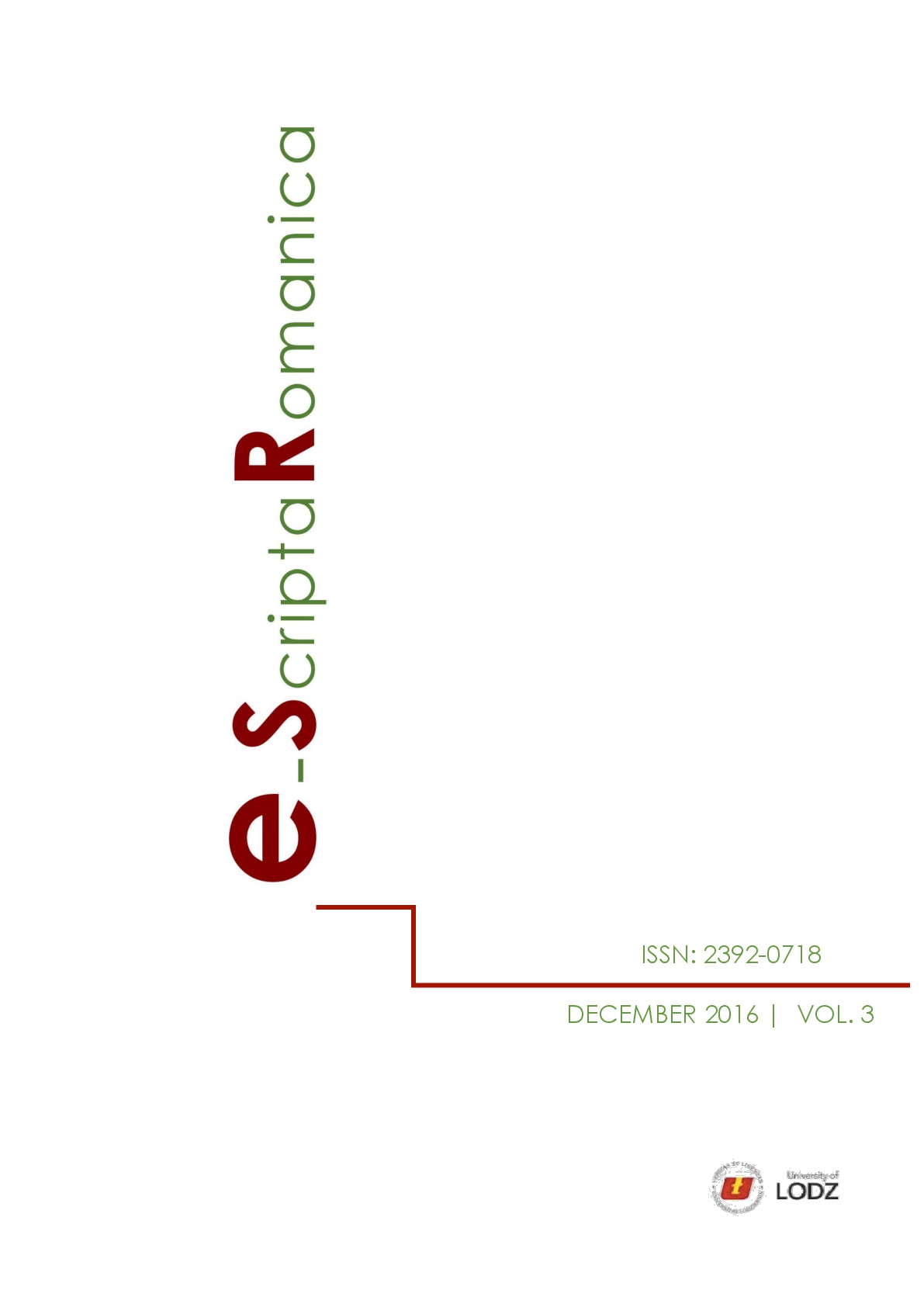The current space of Romance Western Europe: What has changed in the last hundred and fifty years?
DOI:
https://doi.org/10.18778/2392-0718.03.01Keywords:
Romània, national languages, migration, citiesAbstract
This paper aims to study the current profile of the Romance languages in Western Europe. National languages are presented between their relationships with the local languages by comparing these data with classical description made in the manuals. Then, two important elements to the ethnolinguistic profile of these spaces are mentioned: the migratory movements, intra-national and extranational, and the role of cities as producer centers of a standard norm and of the linguistic innovations.
References
BADESCU, I. (2011): Cu fața spre Bizanț. Bucuresti: Editura Mica Valahie.
Google Scholar
CONFEDERAZIONE SVIZZERA (2016): Lingue e religioni - dati indicatori. Disponibile in: http://www.bfs.admin.ch/bfs/portal/it/index/themen/01/05/blank/key/sprachen.html Consultato il 30/09/2016.
Google Scholar
DE MAURO, T. (2015): Storia linguistica dell'Italia Unita. Roma, Bari: Editori Laterza.
Google Scholar
GARGALLO GIL E. y REINA BASTARDAS M. (eds.) (2007): Manual de lingüística románica. Barcelona: Ariel.
Google Scholar
JUNTA DE ANDALUCIA: El latín y las lenguas neolatinas. Disponibile in: http://agrega.juntadeandalucia.es/repositorio/25072011/41/esan_2011072513_9214737/ODE-ccc66b9e-9003-3d5b-b9d5-acba197f4eb8/2__el_latn_y_las_lenguas_neolatinas.html Consultato il 30/09/2016.
Google Scholar
LEDGEWAY, A. (2000): A comparative syntax of the dialects of southern Italy: a minimalist approach. Oxford, Boston: Publications of the Philological Society.
Google Scholar
LOPORCARO, M. (2009): Profilo linguistico dei dialetti italiani. Roma, Bari: Editori Laterza.
Google Scholar
MARCATO C. (2002): Dialetto, dialetti e italiano. Bologna: il Mulino.
Google Scholar
METZELTIN M. (2007): “Del Renacimiento a la actualidad (I). Procesos de codificación de las lenguas românicas”. E. GARGALLO GIL y M. REINA BASTARDAS (Eds.): Manual de lingüística románica. Barcelona: Ariel, pp. 147-198.
Google Scholar
POSNER R. (1998): Las lenguas romances, S. IGLESIAS (trad.). Madrid: Cátedra.
Google Scholar
RENZI L. & ANDREOSE A. (2015): Manuale di linguistica e filologia romanza. Nuova edizione. Bologna: il Mulino.
Google Scholar
ROHLFS G. (1966-1969): Grammatica storica della lingua italiana e dei suoi dialetti. Torino: Einaudi.
Google Scholar
ROSSILLON P. (dir.), (1983) : Un milliard de Latins en l’an 2000. Etude de démographie linguistique sur la situation présente et l’avenir des langues latines. Paris : L’Harmattan/ Union Latine.
Google Scholar
TAGLIAVINI C. (1962): Le Origini delle lingue neolatine: introduzione alla filologia romanza. Bologna: Pàtron Editore.
Google Scholar
VANELLI, L. (1998): I dialetti italiani settentrionali nel panorama romanzo. Studi di sintassi e morfologia. Roma: Bulzoni.
Google Scholar
VARVARO, A. (2005): “Lingue, Regno d’Arles”. Enciclopedia Federiciana. Disponibile in: http://www.treccani.it/enciclopedia/regno-d-arles-lingue_(Federiciana)/ Consultato il 30/09/2016.
Google Scholar
WALTER H. (1988) : Le français dans tous les sens. Grandes et petites histoires de notre langue. Paris : Robert Laffont.
Google Scholar
WRIGHT, R. (1988): “Latín tardío y romance temprano (1982-88)”. Revista de Filología Española, 68/3-4, pp. 257-69.
Google Scholar
Downloads
Published
How to Cite
Issue
Section
License

This work is licensed under a Creative Commons Attribution-NonCommercial-NoDerivatives 4.0 International License.











